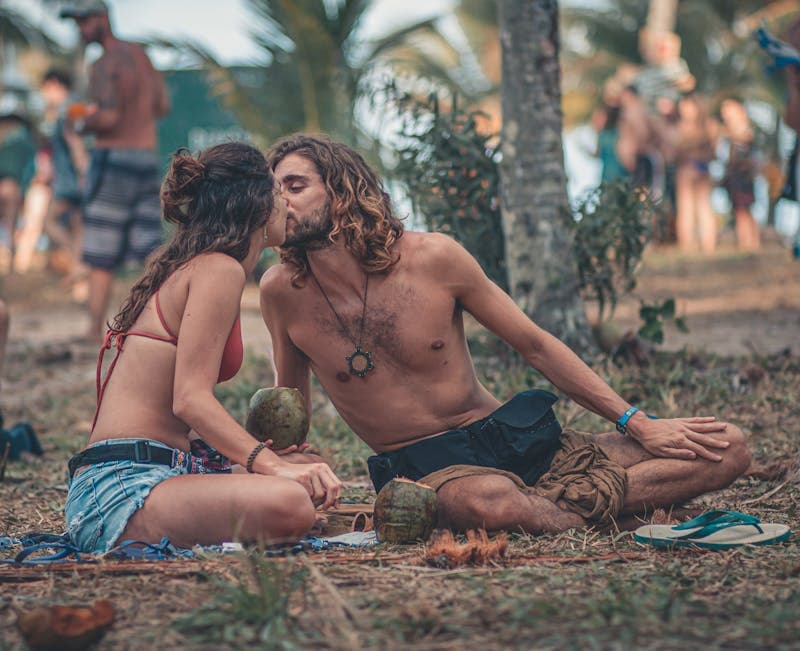Long hair, worn jeans, and flowers…Hippies became a cult movement in the second half of the 20th century. In this article, we explore how they emerged, gained popularity, and where they are now.
The Hippie movement originated in the United States in the 1960s and continues to this day. Hippies oppose Puritan values, traditionalist foundations of society, and wars; promote equality, non-violence, love, and the pursuit of happiness.
In the 1960s and 1970s, the hippie movement was popular in the USA, Europe, and even the USSR. Hippies resisted the cult of career, success, and consumption. They left their parents’ homes, united in communes, and travelled from one music festival to another. Hippies experimented with psychotropic substances and were interested in Eastern culture and philosophy. It was the hippies who contributed to the popularization of yoga, vegetarianism, veganism, astrology, Frisbee, and environmental activism.
Many in the hippie movement were visionaries and influenced the development of computer technology and the Internet. Young hippies assembled home computers in the garages of their parents’ homes in San Francisco – this is how many Silicon Valley giants such as Apple were born.
Music played a huge role in the life of hippies. Largely thanks to this movement, The Doors, The Beatles, Led Zeppelin, Janis Joplin, and Jimi Hendrix gained worldwide popularity. These guys performed at one of the most famous music festivals, Woodstock, which attracted around 400 thousand people.
Hippie Style and Philosophy
Hippies conveyed their views on life through their appearance and lifestyle. They criticised the desire for material wealth and believed that happiness is a spiritual state.
The deliberate casualness of the clothes contrasted with the neatness of the 1950s style. Hippies wore colourful dresses, old T-shirts, sandals, unisex clothing, and a lot of handmade jewellery. Hippies were interested in the culture of the East, so many of them wore clothes and jewellery with Indian, Afghan, and Nepalese patterns. As a sign of protest, hippies grew their hair long, wore it loose or braided, and wore flower crowns. Men and women with long hair blurred traditional gender roles, which displeased conservatives.
The hippies themselves believed that they were “wonderful people” and “flower children.” This phrase refers to the Christian idea that every person is beautiful and good by nature because God created them with love. Interestingly, hippies were often quite religious. They appreciated sacred commandments that prohibited cruelty and violence. Flower children interpreted some of these commandments into slogans, for example: “Make love, not war.”
Hippies loved to travel; they sought quiet places where they could be alone with nature and distance themselves from the problems of the modern world like wars, the struggle for a place in society, and daily cruelty. Moving from place to place, the hippies met new people who were invited to join their cheerful company. So, hippies travelled around the United States in large families.
Sometimes they hitchhiked, but more often than not, for traveling long distances, they chose an old minivan. This minibus became a real symbol of the hippie era. Volkswagens were painted in all the colours of the rainbow, with peace symbols, flowers, clouds, and words from The Beatles songs. Hippies literally lived in these large cars, as they abandoned apartments and mansions.
The young people arranged the minibuses well. They made small beds inside, carefully placed antique furniture, and, most importantly, found a place for a vinyl record player.

Where and how do hippies live today?
Since the 1980s, the popularity of the hippie movement gradually declined. Young people grew up, found jobs, and started families. They became part of the system they once opposed.
Today, there aren’t many people who identify as hippies. However, several communes have survived. For example, the eco-community “The Farm” has existed in the USA since 1971, with about 200 people regularly living there. It has a centre, a small publishing house, and hotels. In Europe, the most famous hippie commune is Christiania, a quarter in Copenhagen where about 850 people live, and various festivals are regularly held.
Despite the peak of hippie popularity being in the past, many of their ideas are gaining renewed attention. Trends such as environmental friendliness, veganism, eco- and agrotourism, co-working spaces, co-living spaces, renewable energy (which hippies popularized with solar panels in the 1970s), the love for nature, polyamory, and downshifting to Asia are resurfacing. In many ways, this represents an adaptation of classic hippie ideas to modern realities.







